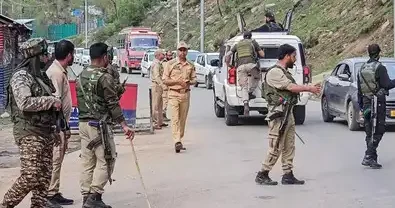Witness accounts suggest the attackers may have singled out individuals based on their religion.
Srinagar, April 23— In a brutal escalation of violence in Indian-administered Kashmir, at least 26 tourists were gunned down on Tuesday in an attack that marks one of the deadliest targeting civilians in the region in recent years.
The assault occurred in the Baisaran meadow, a popular tourist destination near Pahalgam, often referred to as “mini Switzerland” for its stunning alpine scenery. Gunmen opened fire on a group of around 40 tourists, catching them off guard as they were enjoying pony rides in the meadow. At least three dozen others sustained injuries, many of them critically.
Authorities confirmed that the attackers—believed to be four in number—emerged from dense forest and fired from close range. Witnesses described scenes of chaos and horror as gunmen, dressed in military fatigues and resembling security personnel, began shooting indiscriminately.
The Resistance Front, believed to be a proxy for Lashkar-e-Taiba, has claimed responsibility for the attack. If verified, this would mark one of their most high-profile assaults on civilians in recent memory.
In response, security forces launched a large-scale search operation across the surrounding forests, while political leaders across the spectrum condemned the violence. India’s Home Minister vowed to bring the perpetrators to justice, calling the attack “heinous and cowardly.”
Prime Minister Narendra Modi is returning early from an overseas visit to oversee the situation, while international reactions poured in. The United Nations, United States, and other global leaders strongly denounced the killings, calling for accountability and solidarity with India against terrorism.
Kashmir, a region claimed by both India and Pakistan, has been marred by conflict for decades. Since the abrogation of its semi-autonomous status in 2019, the area has seen increasing military presence and a crackdown on dissent. Despite a push for tourism as a sign of normalcy, the attack has shaken public confidence and cast a shadow over the perceived calm in the region.
The Baisaran attack echoes earlier massacres, including the 2000 Chittisinghpora massacre, and serves as a grim reminder of the volatility in the Valley. Violence in recent years had largely shifted to the remote Jammu region, but this strike signals a possible resurgence of attacks targeting civilians in Kashmir’s tourist hubs.
As investigations continue and rescue operations conclude, survivors remain haunted by what was supposed to be a peaceful holiday turned into a nightmare of terror.
